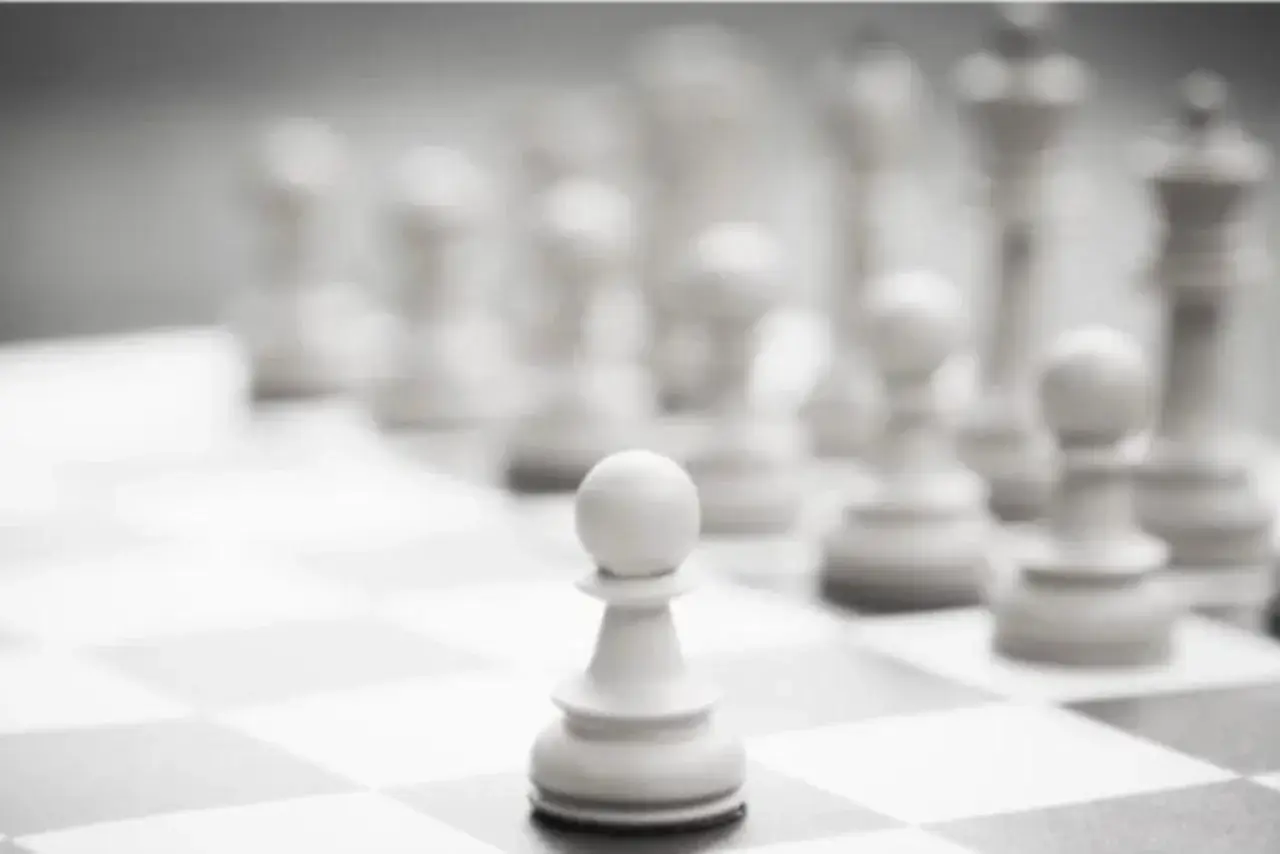In chess, every move can determine the fate of a game, the positioning of Pawns often holds the key to success. The seemingly humble Pawns, standing as the first line of defense, have a profound impact on the overall dynamics of a chessboard.
Pawn structure is more than just a matter of aesthetics; it’s the cornerstone of your chess strategy. Every move and every capture reshapes the terrain, creating opportunities and challenges that can lead to victory or defeat. In this article, we’ll embark on a journey to unravel the secrets of Pawn structure in chess. We’ll explore how Pawn formations influence your game, dictate your tactics, and ultimately define your path to victory.
This post contains affiliate links. Please read our disclosure.
Chess is not just a game; it’s a beautiful art form that has captured the hearts and minds of enthusiasts for centuries. As a chess player myself, I’ve experienced the thrill of outmaneuvering opponents and the joy of creating exquisite Pawn structures on the board. Back in the early 1990s, you could often find me at the free tables of Washington Square Park in New York City, sitting down and arranging Pawns in different formations on the concrete public chess boards.
Those moments were dear to my nascent love for the art of chess. Washington Square Park, nestled in the heart of Greenwich Village, has a rich history dating back to the 19th century. Its iconic arch, modeled after the Arc de Triomphe in Paris, serves as a symbol of the park and the city itself. But beyond its architectural grandeur, Washington Square Park has a unique place in the history of chess in New York City.
In the early 1990s, it was a bustling hub for the chess community. Players of all skill levels, from beginners to grandmasters, converged on the park’s chess tables to engage in intense battles of wit and strategy. The click-clack of chess pieces and the animated discussions between players filled the air. Washington Square Park became a haven for chess enthusiasts, a place where chess was not just a game but a way of life.
For over 25 years, I haven’t had the chance to revisit those familiar chess tables at Washington Square Park. Life took me on different paths, but my passion for chess has never waned. As I reflect on those memories, I can’t help but feel a longing to return to that iconic park, to immerse myself once again in the vibrant chess culture that thrives there. Soon, I hope to make that journey back to Washington Square Park and rekindle my love affair with the art of chess.
If you are a beginner hoping to learn valuable tactics to improve your chess, then the study of Pawn structure is essential. Join us as we delve into the intricate world of Pawns, discovering the power they hold and the strategies they unlock in the game of kings.
Chess is a game of strategy and tactics, and one of the most important aspects of chess strategy is Pawn structure. Understanding Pawn structure is crucial for beginners as it can greatly influence the outcome of the game. In this article, we will explore various types of Pawn structures and discuss both strong and weak Pawn formations.
Basic Pawn Structure
Pawn structure refers to the arrangement of Pawns on the chessboard. At the start of the game, each side has eight Pawns, forming a protective barrier in front of the other pieces. The most common Pawn structure is the initial setup with Pawns on the second rank.
Here is an example of the basic Pawn structure:
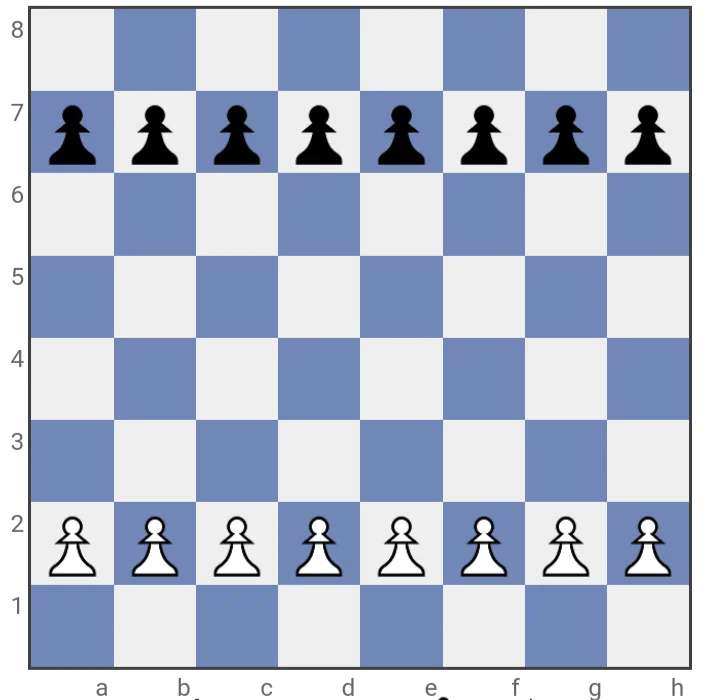
Central Pawn Structure
Controlling the center is a fundamental principle in chess. Placing Pawns in the center of the board (d4 and e4 for White, d5 and e5 for Black) is a strong Pawn structure. It provides control over key squares, allows for piece mobility, and can lead to a strong position.
Take a look at this central Pawn structure:
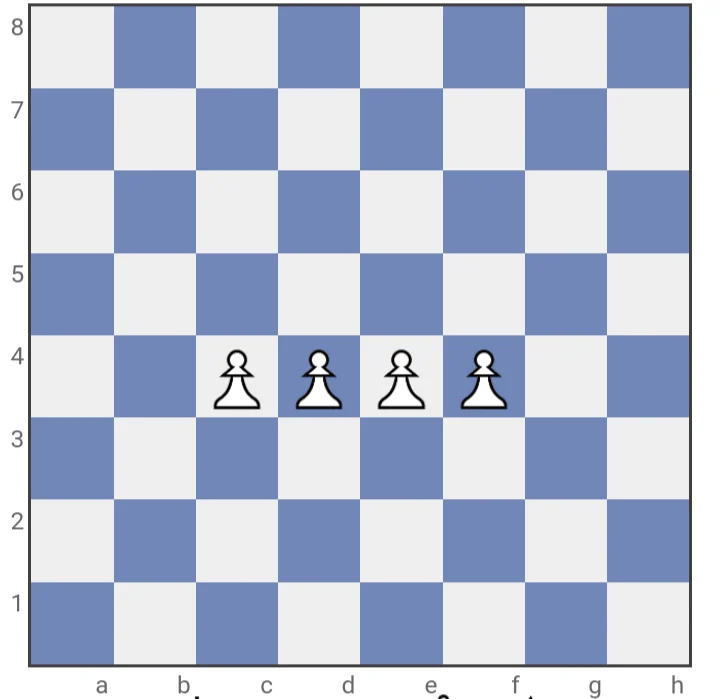
Pawn Chains
Pawn chains are Pawn structures where Pawns are linked in a diagonal line. An example is the “Isolated Queen’s Pawn” (IQP) structure, where a Pawn on d4 (for White) or d5 (for Black) lacks support from adjacent Pawns. While this structure can offer open lines for pieces, it can also be a weakness if not properly defended.
Here’s an illustration of a Pawn chain, specifically the Isolated Queen’s Pawn structure:
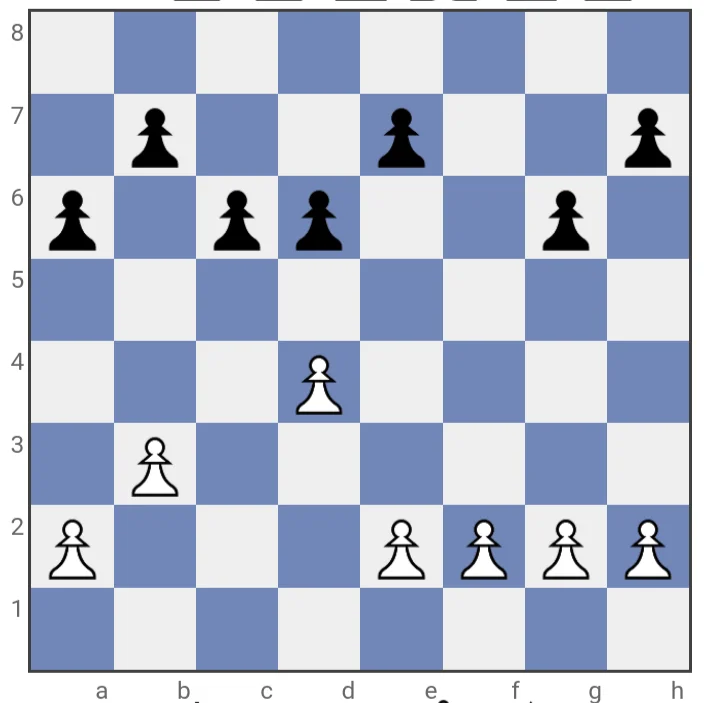
Passed Pawns
Passed Pawns are Pawns that have no opposing Pawns in their path to promotion. They can be a powerful asset, especially in the endgame. Protect and advance your passed Pawns, as they can become queens if they reach the eighth rank.
See an example of a White passed Pawn in action at f5:
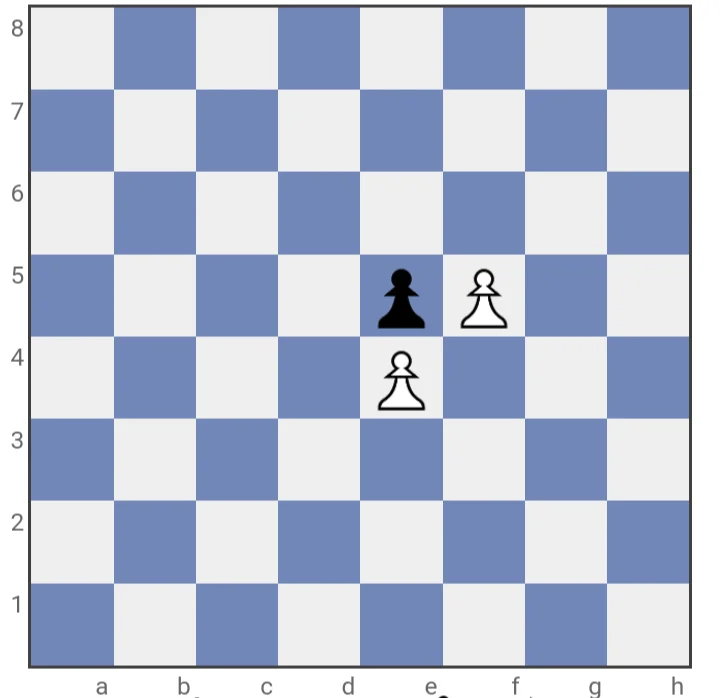
Weak Pawn Structures
Understanding weak Pawn structures is equally important. Weak Pawns are vulnerable to attack and can become targets for your opponent. Some common weak Pawn structures include:
- Doubled Pawns: When two Pawns of the same color are stacked on the same file, they can’t defend each other, making them vulnerable.
- Isolated Pawns: Pawns that have no neighboring Pawns on adjacent files are isolated and easier to target.
- Backward Pawns: Pawns that are behind their neighboring Pawns and can’t advance without support.
In this illustration, we can see an instance of doubled Pawns at f4 and f5:
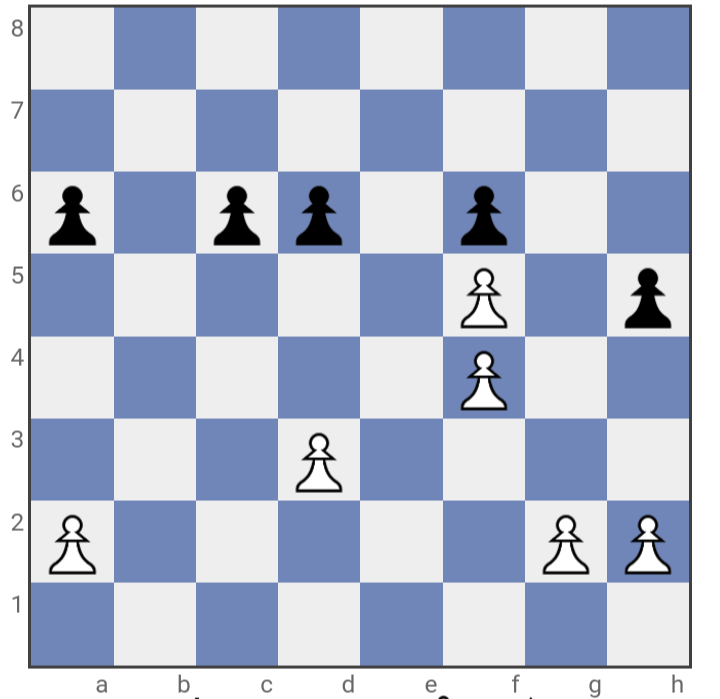
The following is an example of an isolated Pawn at d4:
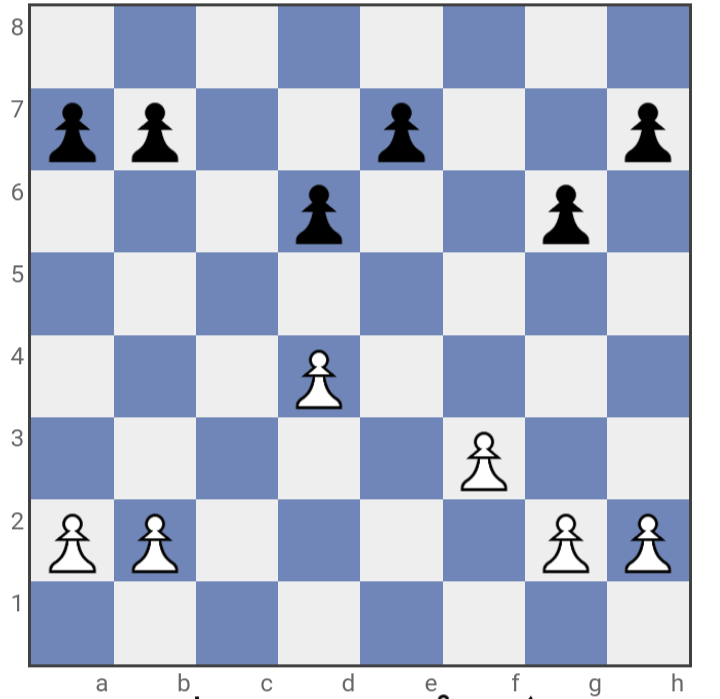
In this photo, we can observe a White backward Pawn at d4:
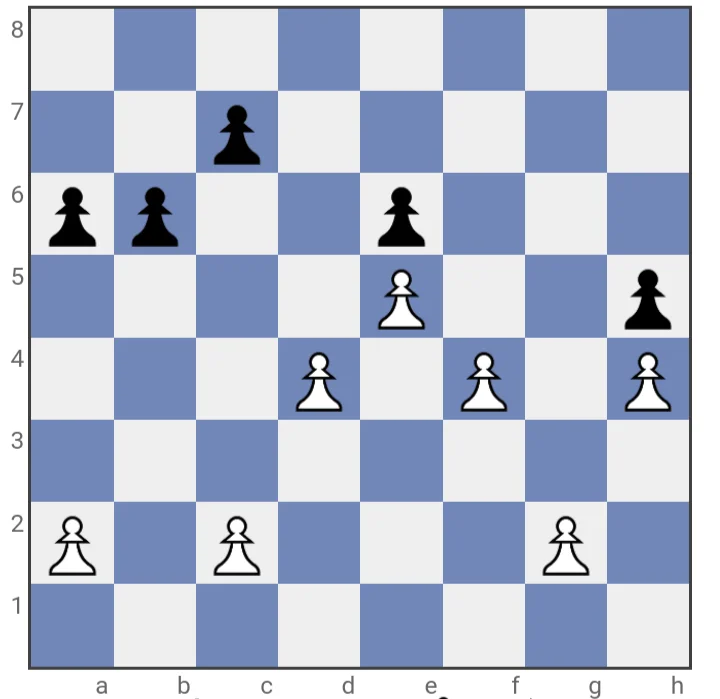
Fixing Weaknesses
Fixing weak Pawn structures involves improving their positions or creating counterplay. This can be done by advancing or exchanging Pawns strategically, or by providing support to vulnerable Pawns with your pieces.
Endgame Considerations
Pawn structures play a critical role in the endgame. In endgames, having an advanced and connected Pawn structure can give you a significant advantage, as it restricts your opponent’s pieces and provides a path for your Pawns to promote.
Here’s an example of a favorable endgame Pawn structure for White:
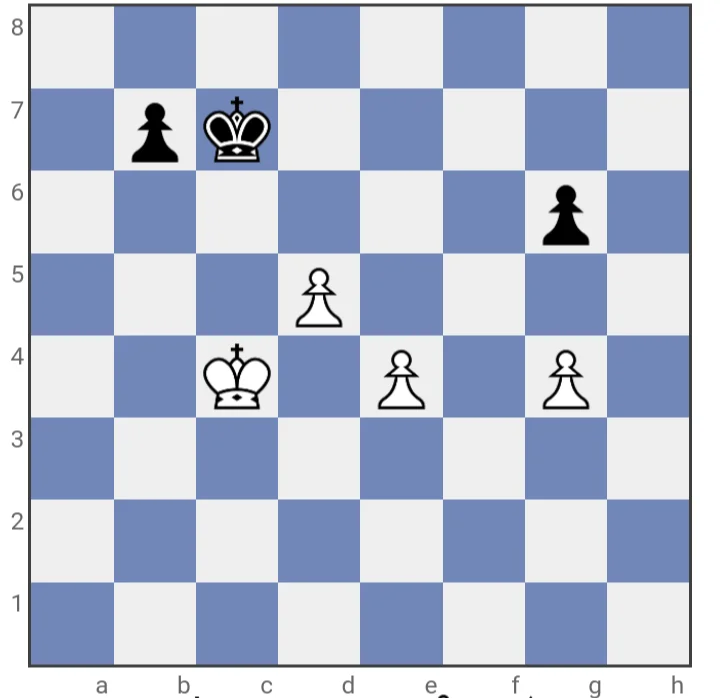
White not only has more space, but the Pawns are more advanced on the than his opponent’s and are closer to promotion. You can also observe that White has two Pawns compared to Black’s two. White is well on the way to victory.
Conclusion
Our journey through chess Pawn structures has been like putting the finishing touches on a masterpiece. We’ve delved into the art of controlling the center, crafting strategic Pawn patterns, and promoting Pawns to greatness. Along the way, we’ve also learned to recognize strong Pawn structures that strengthen our position and avoid the pitfalls of weak Pawn formations. But chess isn’t just about winning; it’s about enjoying the game, learning, and building friendships. Chess is both a strategic endeavor and an artistic expression, offering endless surprises to uncover and enjoy as you continue your chess adventure.
